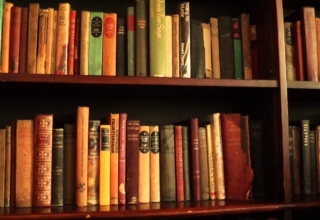
In one of his gentle stories from the Prairie Home companion radio program about life in a small Minnesota town (“Lake Wobegon”), Garrison Keiller speaks about the “storm home” that was assigned to him by his school when he was a small boy.[x] Keiller lived in the country and had to get to school by bus. Consequently, to prepare for the possibility that he might be stranded in town as a result of a snow blizzard, the school gave him (and the other children living in the country) an alternative home to go to that is located in town.
Keeler never had to go to this home; however, he often walked by his “storm home” and reflected on the loving, supportive nature of the couple who were his “storm parents.” He often thought of this man and woman and their house when things were going bad or when he was discouraged. He fantasized that this couple had specifically picked him out as their “storm child” and that they would welcome him with open arms during difficult times.
We may similarly need a “storm home” as adults working in a VUCA-Plus world. The “storm home” of the mind may be created through use of a technique or ritual that provides internal support and encouragement for our difficult decisions and risk taking behavior. In essence, we pat ourselves on the back or find a way (through meditation, daydreaming or quiet reflection) to calm ourselves down and gain a sense of reassurance.
A colleague who presides over an educational institution found that he could gently touch his forehead when under stress and evoke with this touch a sense of personal calmness. These moments of personal sanctuary during the day may be essential components in any postmodern survival kit. Another colleague ensures that she sets aside one day each week for her writing. A third friend insists on swimming in the San Francisco Bay every day during lunchtime. In each instance, an internal sanctuary that is “safe and strong” has been created for both healing and reflection.
Ultimately, we create containers within our own head and heart. This is where the true sanctuaries in our life reside – and where we not only find refuge from anxiety and real or imagined lions, but also find restoration, renewal and new knowledge and insights. As Bion noted, metabolism is ultimately an internal psychic process.
Relationships as a Container of Anxiety: There is a second important way in which a container can be truly psychological—and truly designed to contain anxiety. These special forms of containment might be found in long-term accepting and supportive relationship with a family member or friend. They might also be found in our moments of play with a child or cherished pet. We return home, hopefully, to an environment of warmth and love—a remarkably important sanctuary for many of us. The container can also be found in the caring attitude of a special teacher, coach, mentor or trainer. If we are fortunate, we can reflect back on a special person in our life who provided guidance, understanding and perhaps a gentle kick in the pants – all elements of effective containment (and central to the metabolism process).
Then there are the important temporary relationships in our life: the therapeutic relationship established with a skillful psychotherapist or counsellor, the wise retreat facilitator and workshop leader. During the 20th Century, Warren Bennis and Philip Slater prophetically suggested that we (in the West) are creating “temporary societies.”[xi] We would be moving from a world in which most of the people with whom we affiliate have been a part of our life for many years to a world in which we are often interacting for a few moments with people we just met. While, on the one hand, these temporary relationships can be part and parcel of a VUCA-Plus world, they can also be the source of short-term, important containers. We often can speak more candidly and take greater risks with “strangers” than with the people we must life with and work with every day.
Finally, we can look to the special relationships that are formed within organizational settings. These are the “play spaces” that are created when an organization sets us a “skunk work” task force or sets aside a weekend each year for a retreat in which all members of an organization (regardless of formal status) get to share their ideas and dreams regarding the future of the organization. A setting is created, and facilitation processes are put in place that enable management and union leaders to share perspectives and seek to identify mutually satisfactory solutions to shared problems.
Download Article















